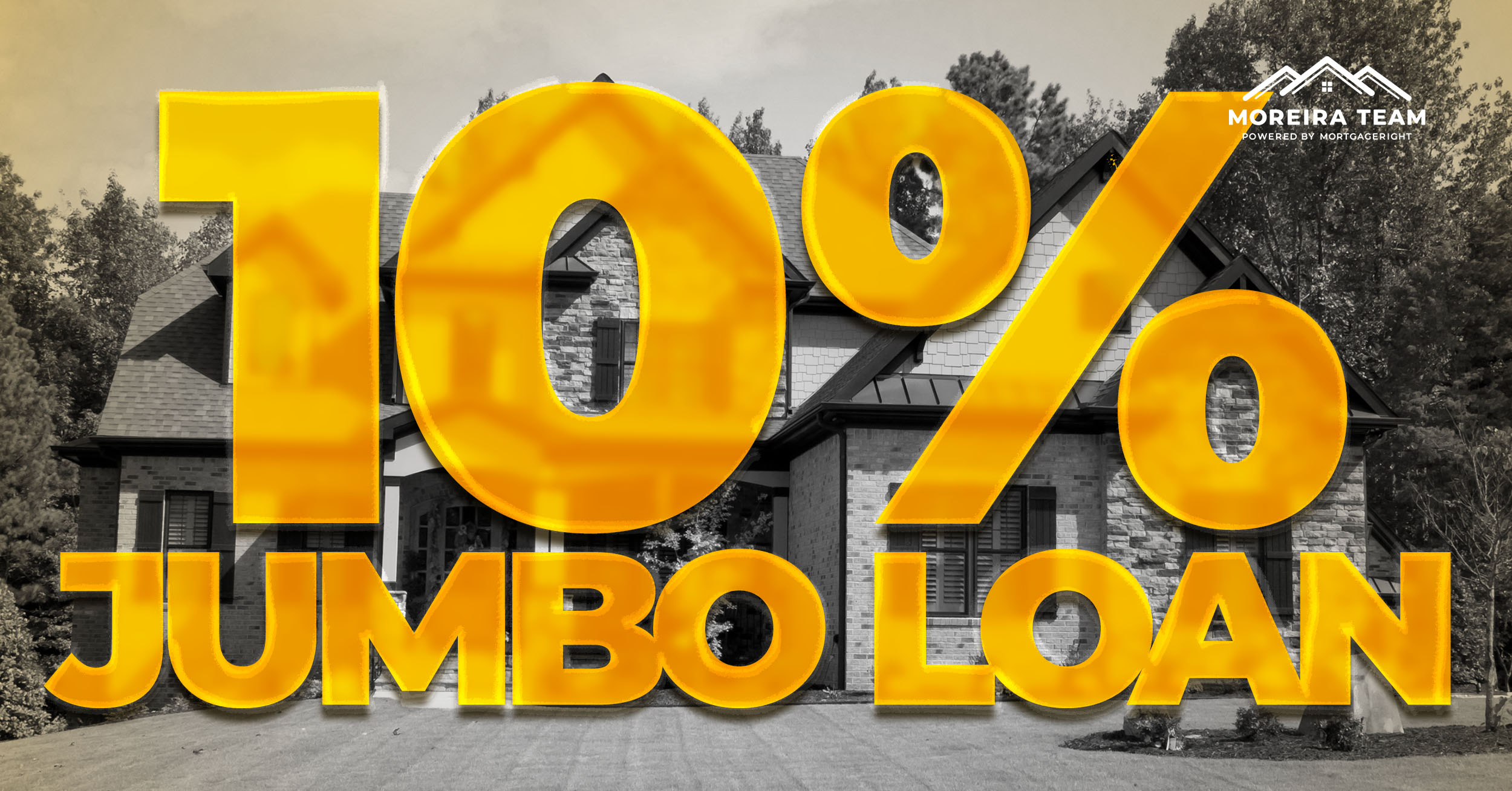
In this article
Jumbo loans with 10 down are not as uncommon as you might think. Many home buyers are looking to buy more expensive properties that exceed traditional conforming mortgage loan limits. This will typically require a “jumbo loan.” And, of course we’re talking about a 10 percent down payment when referring to “10 down.”
What is a Jumbo Loan?
Let’s start with a quick recap of what a jumbo loan actually is. Fannie Mae and Freddie Mac are the government agencies which insure many mortgage loans. However, they will not back home loans above a certain amount. Together with the Federal Housing Finance Agency (FHFA), they set conforming loan limits (CLLs) each year. These limits are standardized across most of the country, though they can vary depending on the location. Some higher-priced markets will have higher CLLs because the average home prices in those counties are significantly higher.
The standard conforming loan limit for single-unit homes in most American real estate markets in 2023 is [default_lon_limit]. In the most expensive markets, it can go as high as $1,089,300. There are also different CLLs for multi-unit properties. The limit goes up depending on how many units there are. If you are buying a home and its price exceeds the conforming loan limit for that area, you will likely need to apply for a jumbo loan. You can click here [link to another jumbo loan article] for more details about jumbo loans.
See How Easy it is to Get Your Custom Rate!Watch Now
Jumbo Loans with 10 Down
Now let’s get back to the original question. Can you qualify for a jumbo loan with a 10% down payment? The simple answer is yes, but it’s not always that simple. The standard down payment required for a jumbo loan will be 20% of the loan amount (i.e., the home’s selling price). Some mortgage lenders may request a jumbo loan down payment as much as 25% or 30%.
At the same time, some borrowers may qualify for a jumbo loan with a 10% down payment or even a 5% down payment. Why? It will depend greatly on the home buyer and their financial situation. Borrowers with better financial standings will generally have more lending options, especially when it comes to jumbo loans.
See How Easy it is to Get Your Custom Rate!Watch Now
Jumbo Loans and Borrower Risk
It all comes down to risk. Because jumbo loans exceed the CLLs and are not insured by Fannie Mae or Freddie Mac, the lender is automatically assuming more risk. You may be working with a direct lender like a bank or through a mortgage broker who isn’t providing the funding directly. Either way, someone has to fund the home loan and they are taking on a lot more risk when issuing a jumbo loan. If a borrower defaults on a jumbo loan, it is going to create much more complicated problems for the lender/bank.

Jumbo Loan Qualification
When you apply for a jumbo home loan, you will have to go through an initial qualification process (mortgage pre-approval) and then ultimately a final approval before the loan is funded. The lender will review your credit score, your debt-to-income (DTI) ratio, income, employment, tax returns and other financial information. They will also ask how much you plan to put toward your down payment.
See How Easy it is to Get Your Custom Rate!Watch Now
Most jumbo loan lenders are looking for a credit score of at least 700 and a DTI of no more than 43%. Of course, your average monthly income must also be high enough to cover the monthly mortgage payments. Your qualification standards may determine how much down payment will be required. Those with strong financial standings may be able to get a jumbo loan with a lower down payment. Those in a weaker position may have to pay a higher down payment to qualify. Remember the down payment amount can also greatly affect your qualified mortgage rate, so those paying lower upfront will likely have higher fixed interest rates as another way to offset the lender’s risk.
Jumbo Loan Mortgage Insurance
If you are able to qualify for a jumbo mortgage loan with less than 20% down, you will be required to pay private mortgage insurance (PMI) or a mortgage insurance premium (MIP) as part of your monthly mortgage payments. Mortgage insurance is an additional fee paid by a borrower to help cover both them and the lender in the case of a loan default. Be sure to ask your lender about mortgage insurance and other fees that may be associated with jumbo loans.

Can I Get a Jumbo Loan as a First-Time Home Buyer?
Yes, jumbo loans are available to first-time home buyers. However, mortgage lenders will apply even more scrutiny when reviewing your financial qualification standards. Most jumbo loan borrowers are move-up home buyers who are applying a large portion of equity from a previous property toward the down payment. This definitely provides an advantage when applying for a jumbo loan.
See How Easy it is to Get Your Custom Rate!Watch Now
A first-time home buyer will need a great FICO score, low DTI and excellent income/employment history to qualify for a jumbo loan. A higher cash down payment will also make a major difference. Jumbo loans with 10 down may be harder for first-time buyers to get, but it is a possibility if they are financially strong in these other areas. Mortgage insurance will definitely be required on any first-time buyer jumbo loans with less than 20 percent down. It may even be required if you put 20 percent down, but the lender is asking for 25-30 percent.
It’s important to consult with an experienced mortgage lender or mortgage broker. See if a jumbo loan is a good option for you and get pre-approved for your jumbo loan to see if you qualify. Contact Moreira Team | MortgageRight today to learn more about jumbo loans and to get started with your application.

